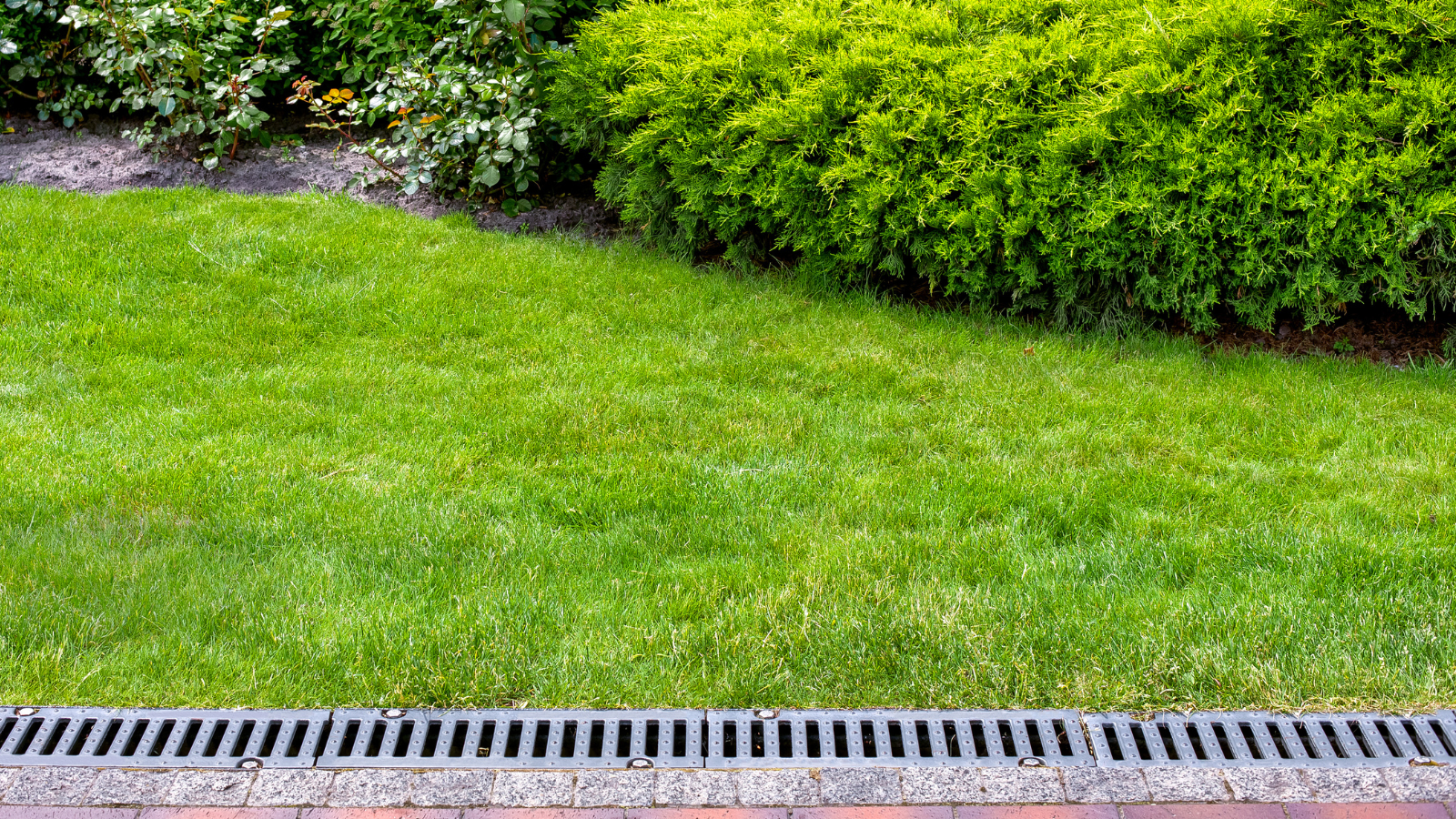
French drains were a trending gardening topic last year and they'e still incredibly popular. They solve a host of common lawn drainage problems, all while hiding in plain sight under your lawn.
However, French drains don't solve every drainage issue. If you have to deal with water on hardscaped surfaces like patios and decks, you'll find that a French drain is totally useless.
I spoke to yard experts about the key differences between these two similar sounding drainage solutions, and which works best for every type of yard.
What's the difference?
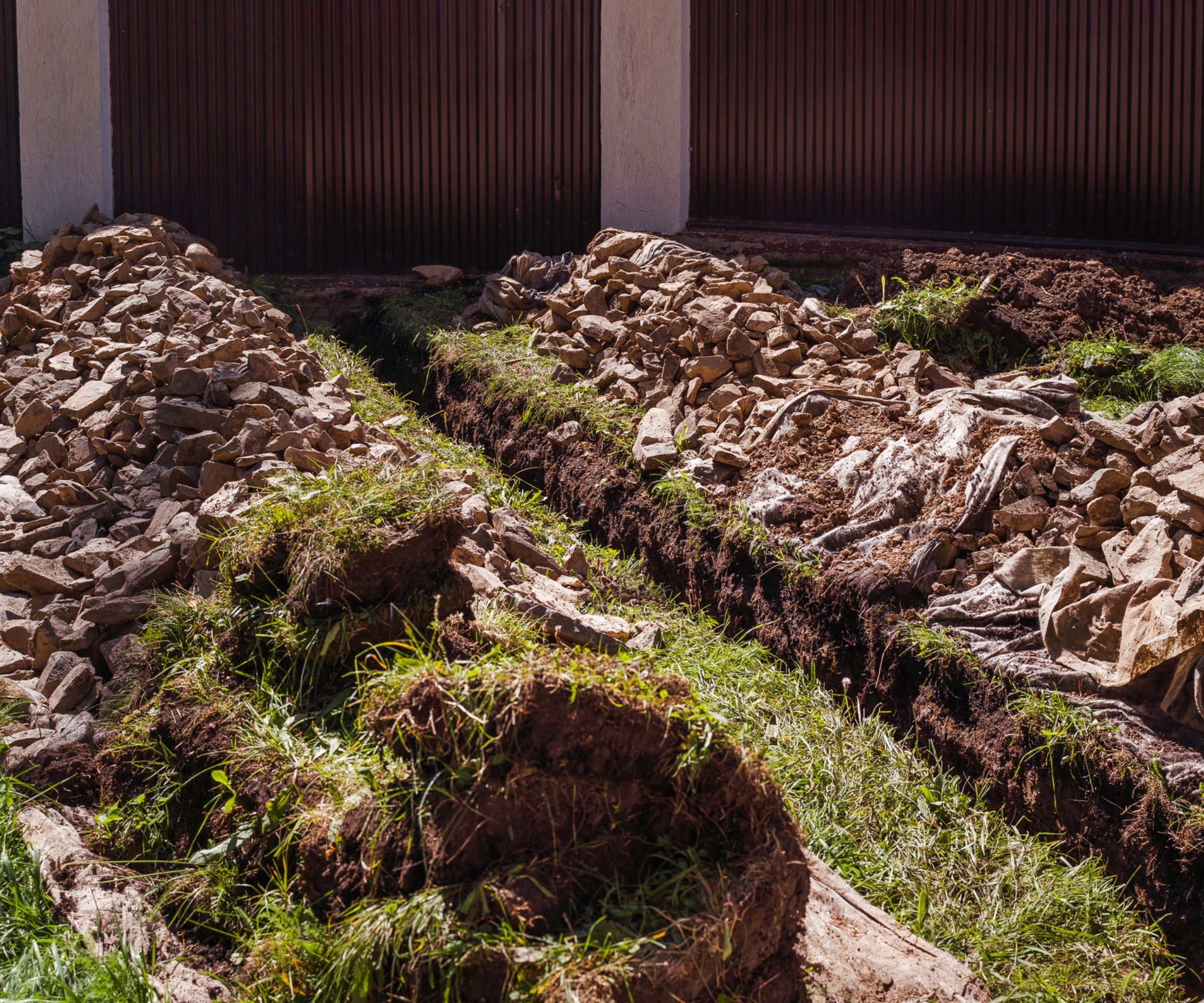
Though they sound similar, trench drains and French drains are actually very different.
Trench drains are basic, surface-level drains. They collect water through a grate and move it away from hard surfaces like patios, decks, and drives.
French drains are a little more complex. French drains use a perforated pipe hidden under gravel and usually turf. This makes them perfect for moving standing water from lawns.
What are the benefits of a French drain?
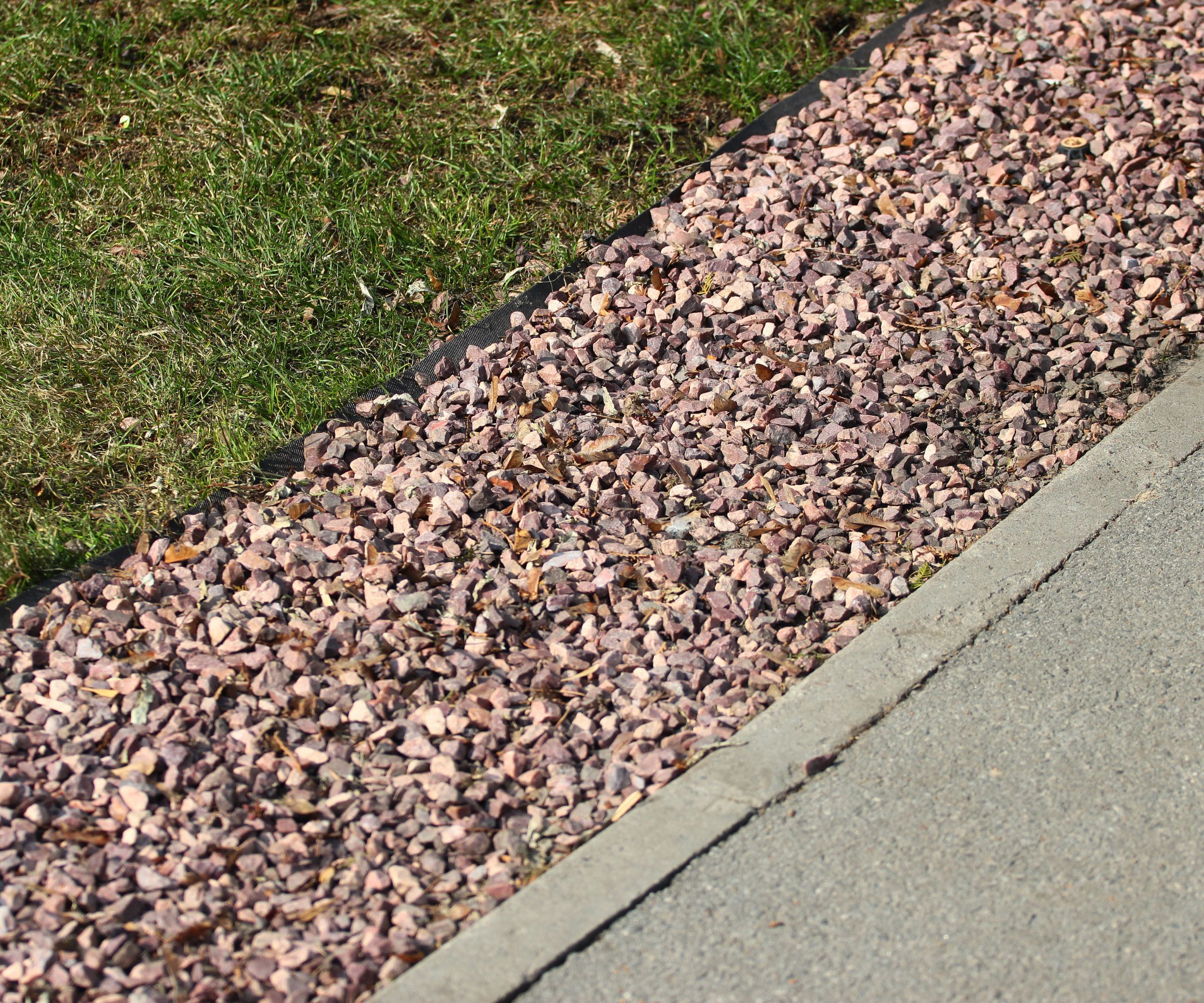
Lawn expert Ryan Farley explains that 'French drains are great when you’re consistently dealing with waterlogged soil. As these types of drains are typically dug deeper into the soil of your yard, they’re able to divert water that’s soaking into your yard. I’ve seen these really help out in yards where too-wet soil is causing yard erosion or plants and grass to fail.'
Though French drains are expensive, they are less costly than Trench drains. Landscaping expert Jeremy Yamaguchi says that 'French drains are often the better choice for residential yards. They are excellent at redirecting water and are typically less expensive to install than trench drains.'
Unlike trench drains, French drains are hidden under gravel, and usually under turf, too. This means they're a much better-looking option than trench drains, because they're completely hidden.
What are the drawbacks of a French drain?
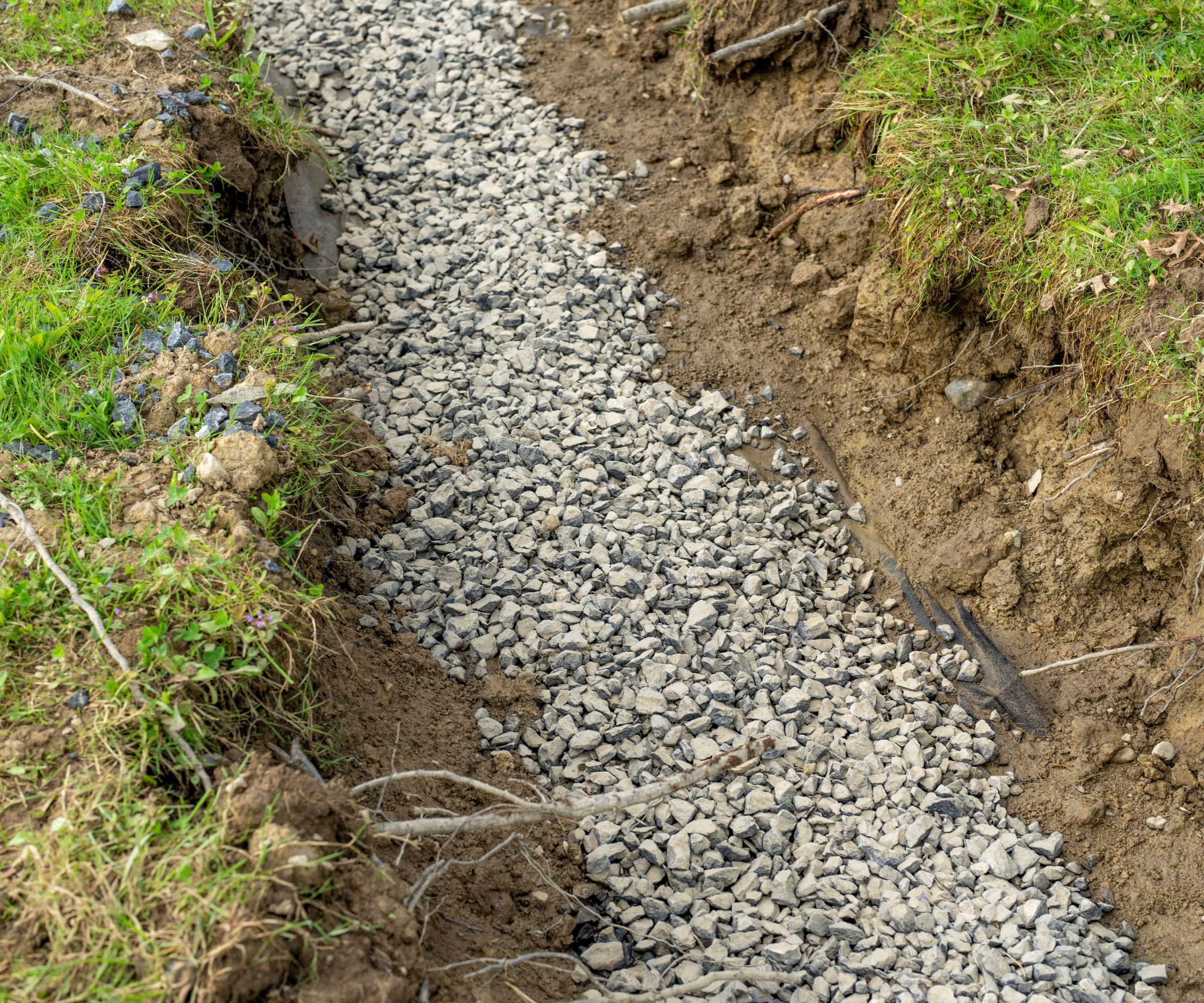
One drawback with French drains is that they only work on lawns. French drains can't help with drainage issues on your patio, deck, or near the foundation of your house. Ryan Farley says 'However, the major drawback of a French drain is just that it’s going to help less with water that’s pooling closer to your house. That’s when you’ll want a trench drain.'
Depending on how you landscape your French drain, it can be a bit of an eyesore. I don't cover it with turf, or put landscaping plants like lavender around the gravel, you have an ugly line of aggregate stretching across your yard. If your kids like to play sports on the lawn they might be disturbed by a rocky French drain cutting across their play area.
French drains are great for moving standing water during usual patterns of rainfall, but they're less capable of tackling stormwater. Because they use perforated pipes and the water trickles through gravel, they can't always handle a huge amount of water.
On top of that, obtaining a permit for a French drain can be tricky. Diverted water needs to go somewhere, and you can't just drain water into neighbors' yards - not only is it antisocial, but most local ordinances don't allow it. You need to connect it to existing pipes or a dry well to ensure proper drainage, and this can be expensive.
What are the benefits of a trench drain?
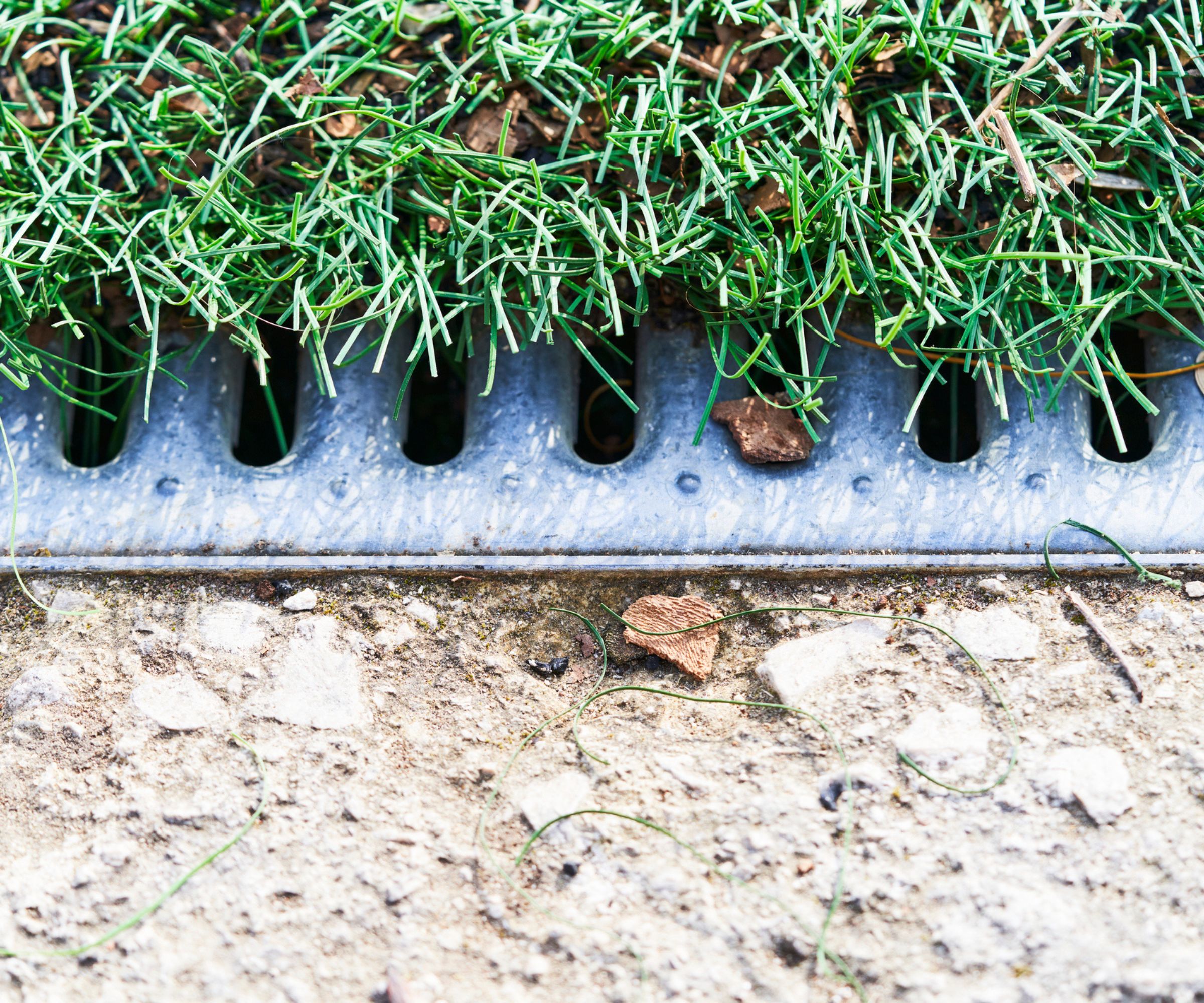
Trench drains tend to be used in commercial settings like parking lots and office buildings, but they can be useful for a yard, too.
Ryan Farley explains that 'Trench drains help with groundwater that hasn’t yet soaked into your soil. I’ve seen them used primarily with homes where yard grading results in water pooling around a home’s foundation. They can also be good if your gutter downspouts tend to deposit water around your home in less than ideal spots.'
Trench drains are easy and cheap to install, and unlike gutters, they don't clog with leaves or debris. In the unlikely case something does go wrong, they're easy to fix and clean, unlike French drains which are buried under rock and soil.
You're less likely to need a permit for a trench drain too. As long as the water isn't draining into a neighbor's yard, you should be fine, as you don't need to dig deep, long channels to install them.
What are the drawbacks of a trench drain?
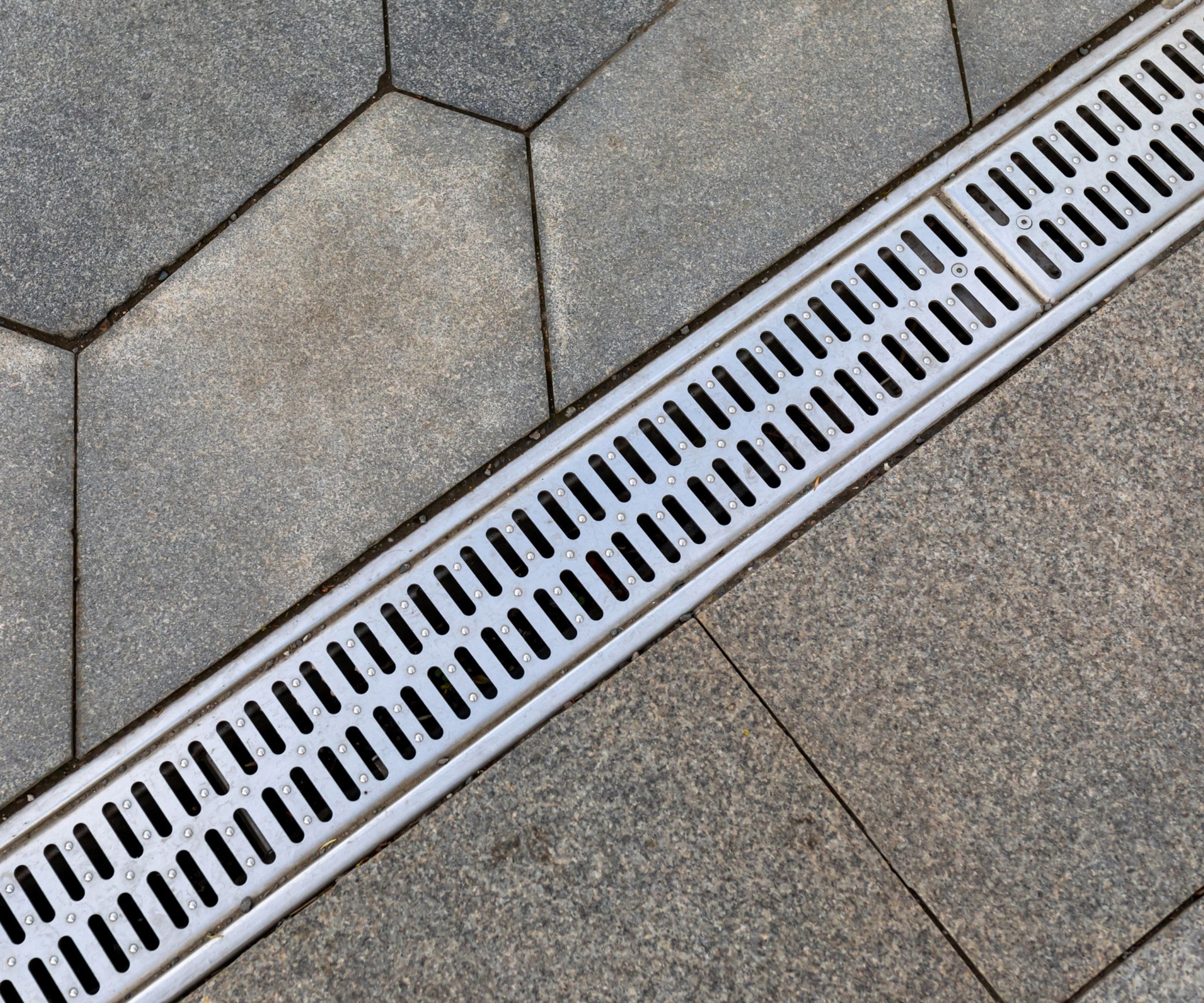
The most obvious issue with trench drains is that they can't be installed on grass. Ryan Farley explains that 'Trench drains won’t tend to help with waterlogged soil, although they can also help prevent too much water from reaching your yard.'
Trench drains are also pretty ugly. They're there for utility, not aesthetics, so they don't always look great. Though you can find decorative trench grates like this at Home Depot, most are boring, black drain covers. If you aren't careful with installation, they can make your patio look like a parking lot.
But before you go to city hall to get a permit for your French drain, there are lots of other solutions to waterlogged lawns. Learning how to aerate a lawn could be a cheaper solution than digging up your garden. Designing a rain garden is another smart way of dealing with water and leveling up your garden style at the same time.







